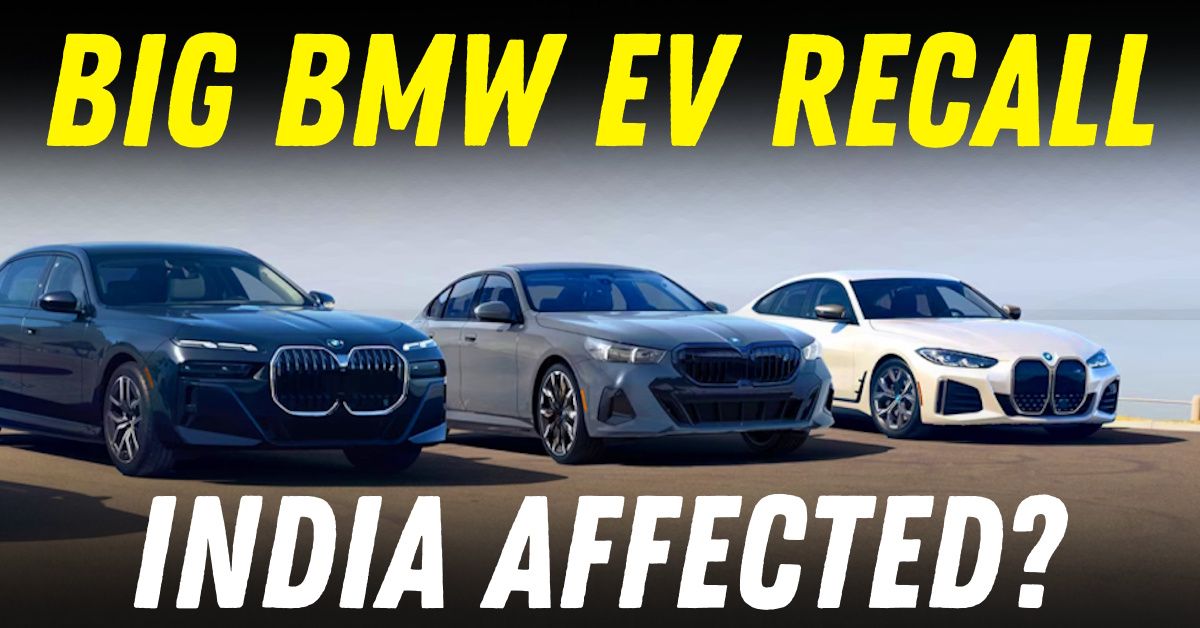BMW USA Recalls Over 70,000 Electric Cars for Sudden Power Loss: India Next?


BMW USA has initiated a major safety recall of more than 70,000 electric vehicles from model years 2022 to 2025. A software fault in the electric motor system may cause the high-voltage drive unit to shut off while the vehicle is in motion. This means the car could lose drive power unexpectedly, increasing the risk of accidents, although brakes and power steering remain functional.
The affected EV models include the BMW i4, iX, i7, and i5. BMW has already begun contacting owners, and official notifications will continue through August. The solution is a free software update that can be delivered either over the air or at authorised dealerships.
The issue stems from the vehicle’s electric motor software, which may incorrectly detect a condition known as double isolation. When this happens, the high-voltage system initiates an automatic shutdown approximately 15 to 20 seconds after a red warning symbol appears on the driver display.
BMW has recorded dozens of cases where propulsion was lost while the vehicle was in motion, although no accidents or injuries have been reported so far. The shutdown is a built-in safety measure, but in this case, the detection logic itself has been found to be overly sensitive. The vehicles do retain brake and steering functions, but the loss of power can be risky in certain traffic situations.
The underlying problem is not mechanical or battery-related. Instead, the software is misidentifying normal conditions as faults, leading to unnecessary shutdowns. This is being corrected through an update that recalibrates the fault detection logic.
One advantage of modern EV platforms is the ability to issue remote software updates. In this case, BMW’s over-the-air system allows the company to fix the issue without needing to recall the vehicle physically. Owners can choose to install the update from home or visit a service centre for assistance.
This approach reduces inconvenience and speeds up the recall process. It also highlights a growing reality in the automotive world where software quality is as important as hardware reliability. A simple coding issue can have the same effect as a physical defect.
BMW India has not announced a recall yet, but it is closely watching developments. All four affected models are currently sold in India, most as fully imported units. If these vehicles share the same software configuration as those in the US, a similar recall may be required here.
According to Indian regulations, global safety issues must be reported to local authorities. If the same software logic exists in India-spec vehicles, BMW may be obligated to issue a domestic recall. In the past, the company has followed up international recalls with Indian campaigns for the same reason.
Customers in India who own an i4, iX, i7, or i5 are advised to contact their dealer or check their vehicle identification number through BMW’s service portals. If a recall is issued, the remedy will likely follow the same pattern - either an over-the-air fix or a free software update at the nearest dealership.
This recall is part of a wider shift in how automotive safety is managed. In traditional vehicles, most safety issues related to hardware like fuel lines or brakes. In EVs, many of the critical systems are software-controlled. While this makes fixes easier in some cases, it also introduces a new type of risk that can go unnoticed until it affects real-world usage.
The incident also puts the spotlight on quality control practices in software deployment. As EVs become more connected and digital, automakers will need stronger testing processes to prevent glitches that could affect safety and reliability.
For BMW, this is an opportunity to showcase transparency and responsiveness. For regulators, it is a reminder to expand oversight from mechanical checks to software audits. And for buyers, it is a clear sign that owning an EV means staying alert not only to charging status or range, but also to regular software updates. The cars of the future will run on code as much as on current - and that code must be safe, stable and smart.